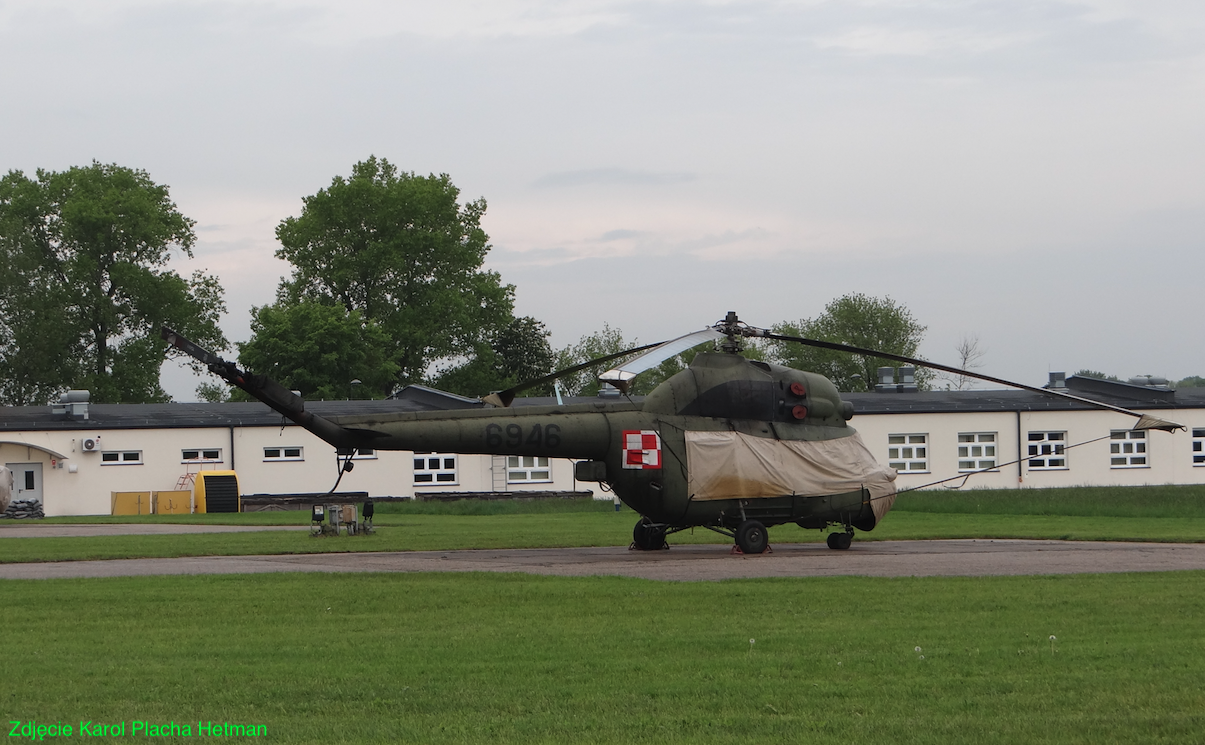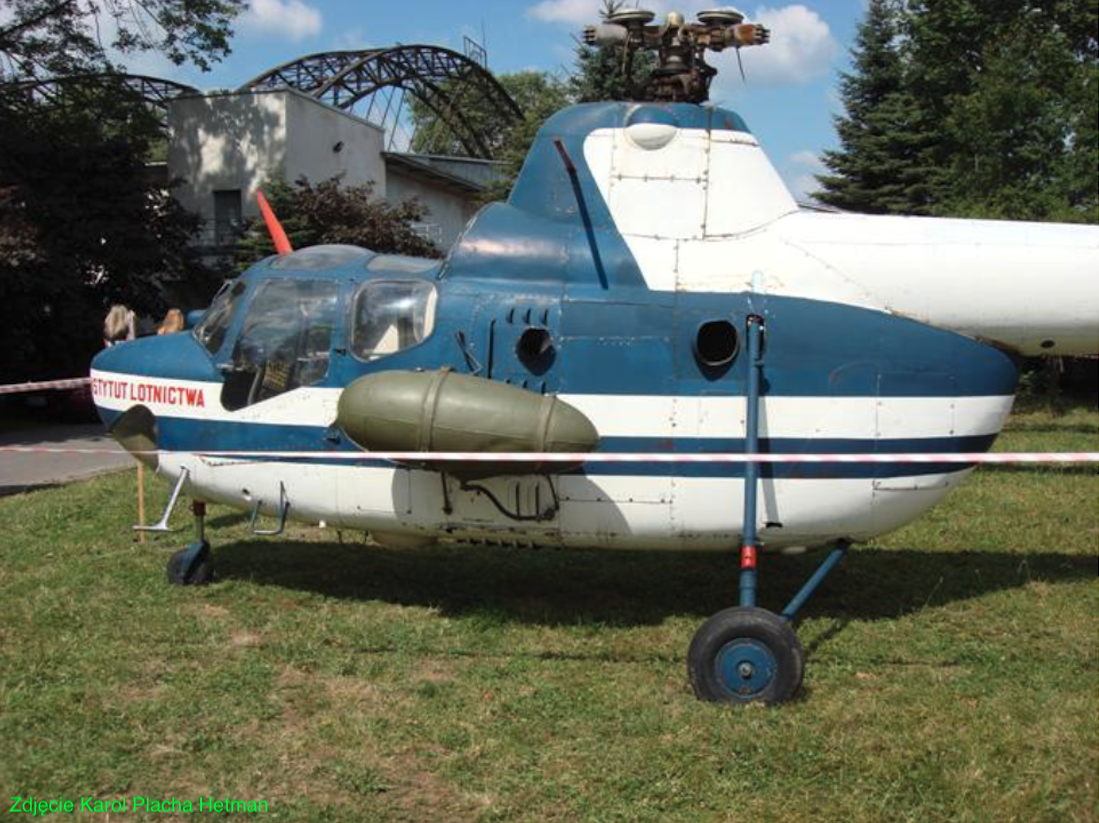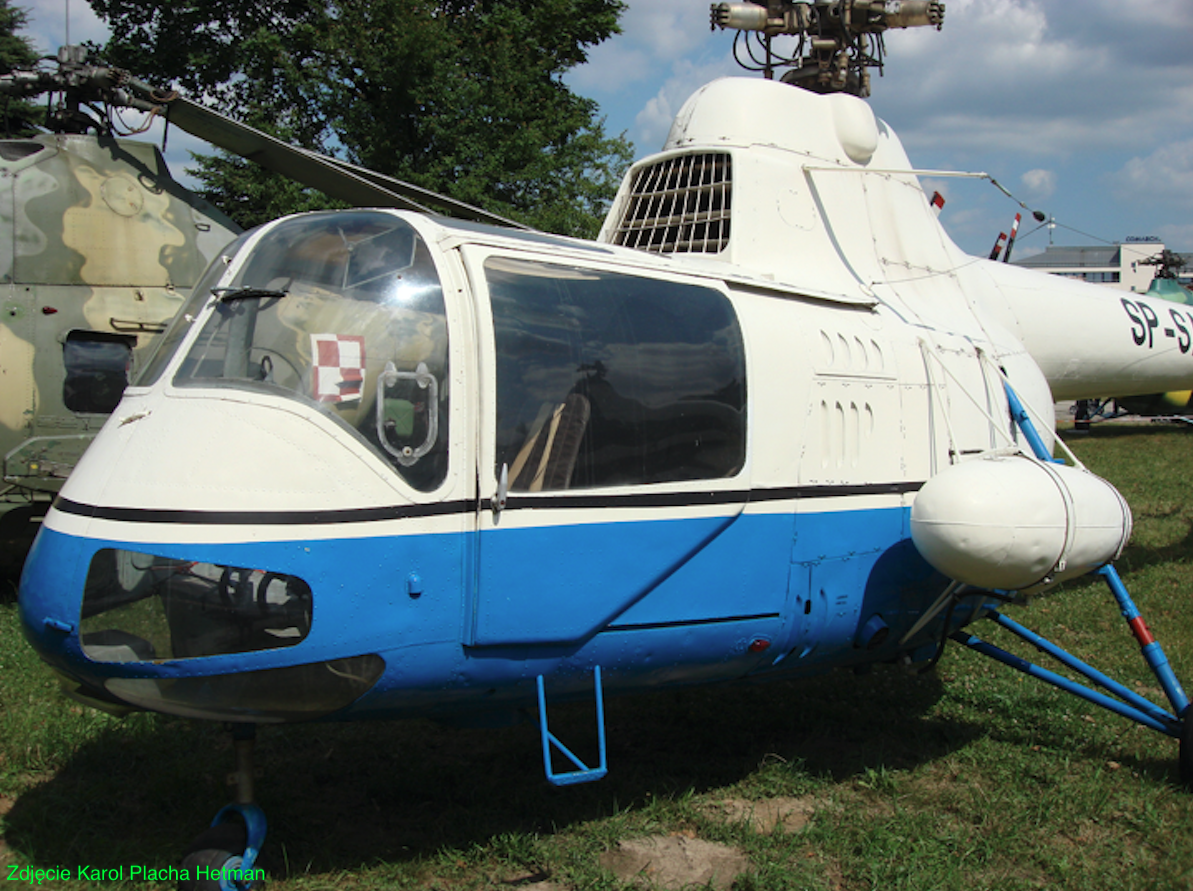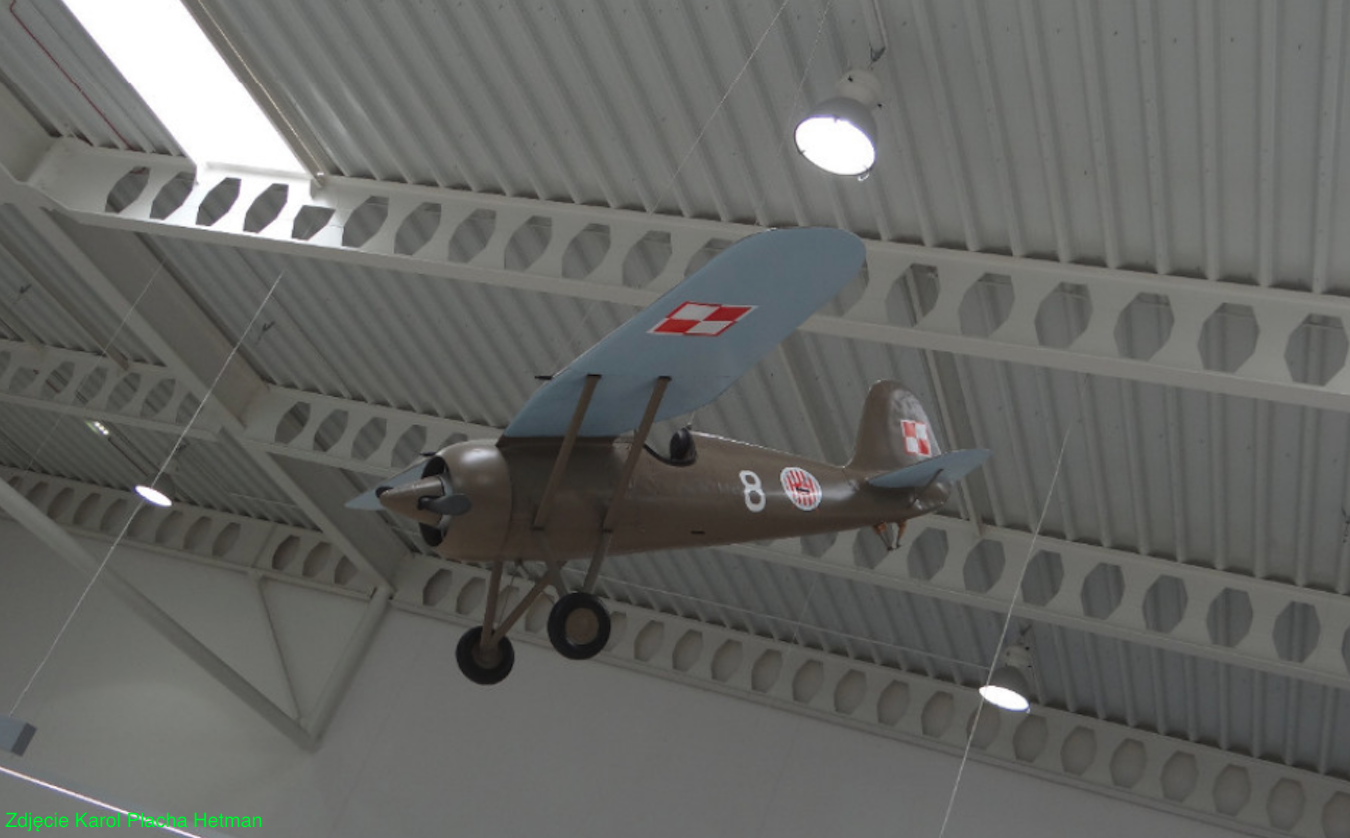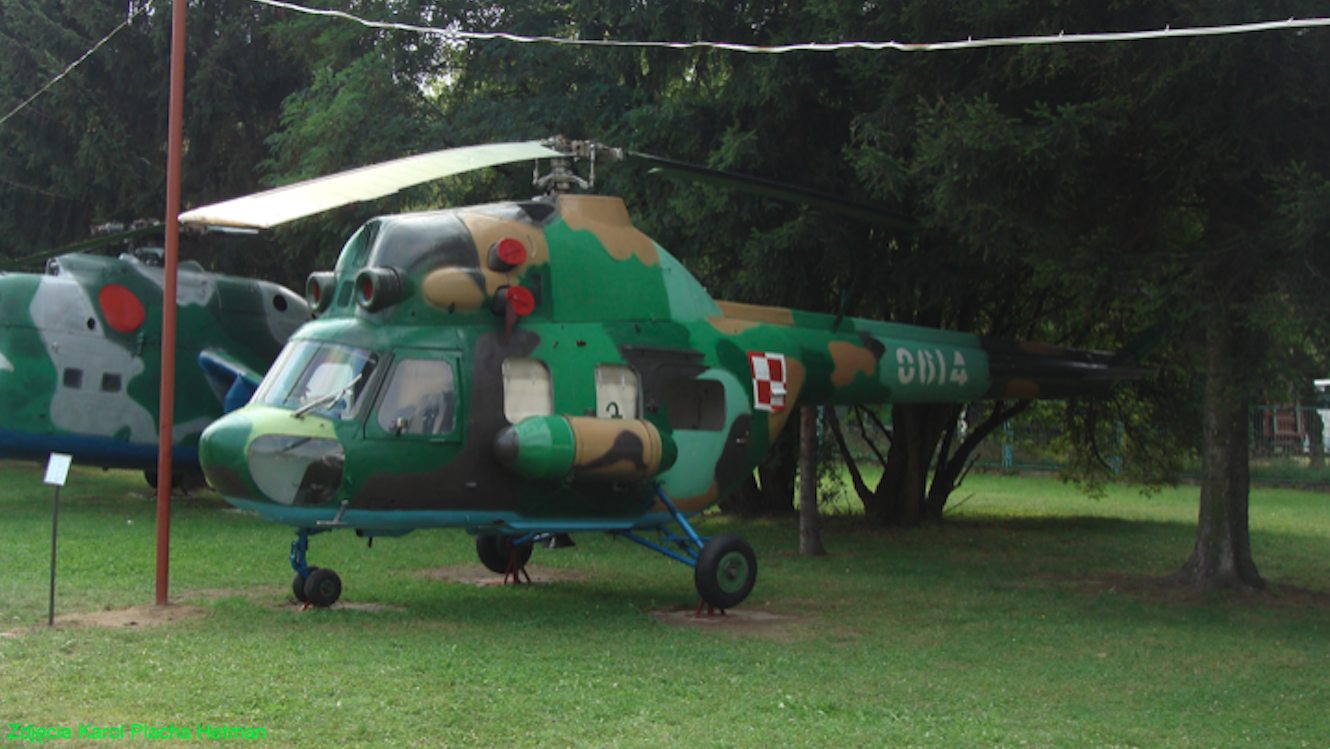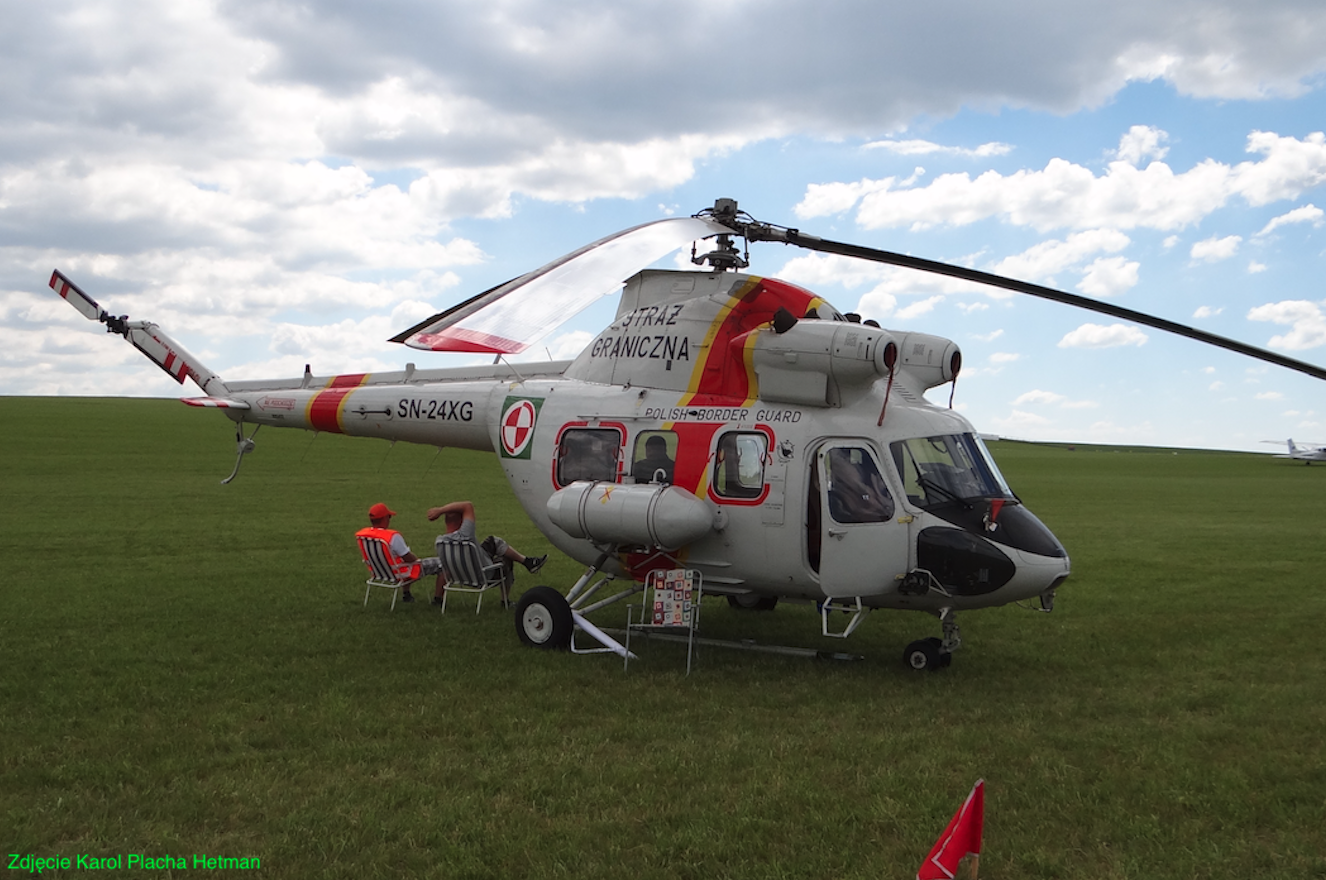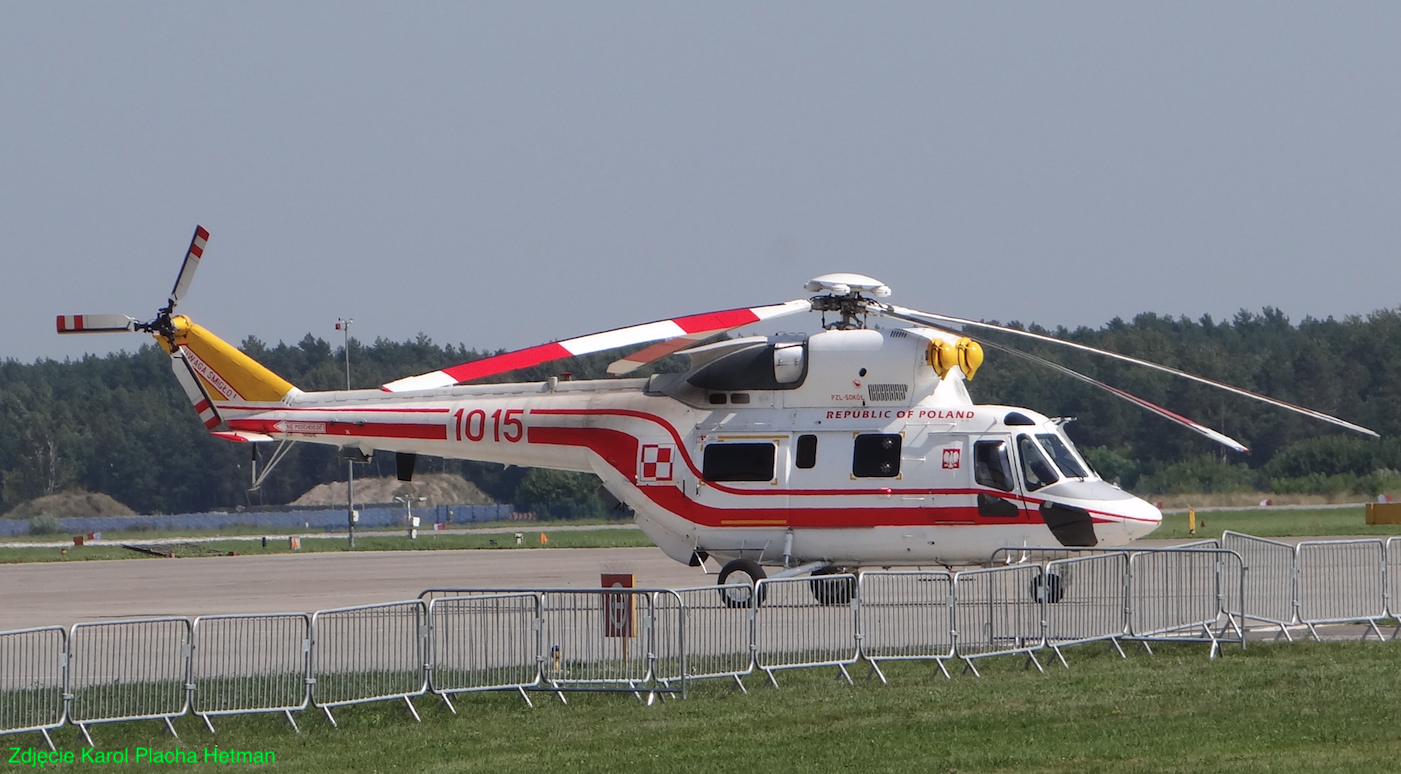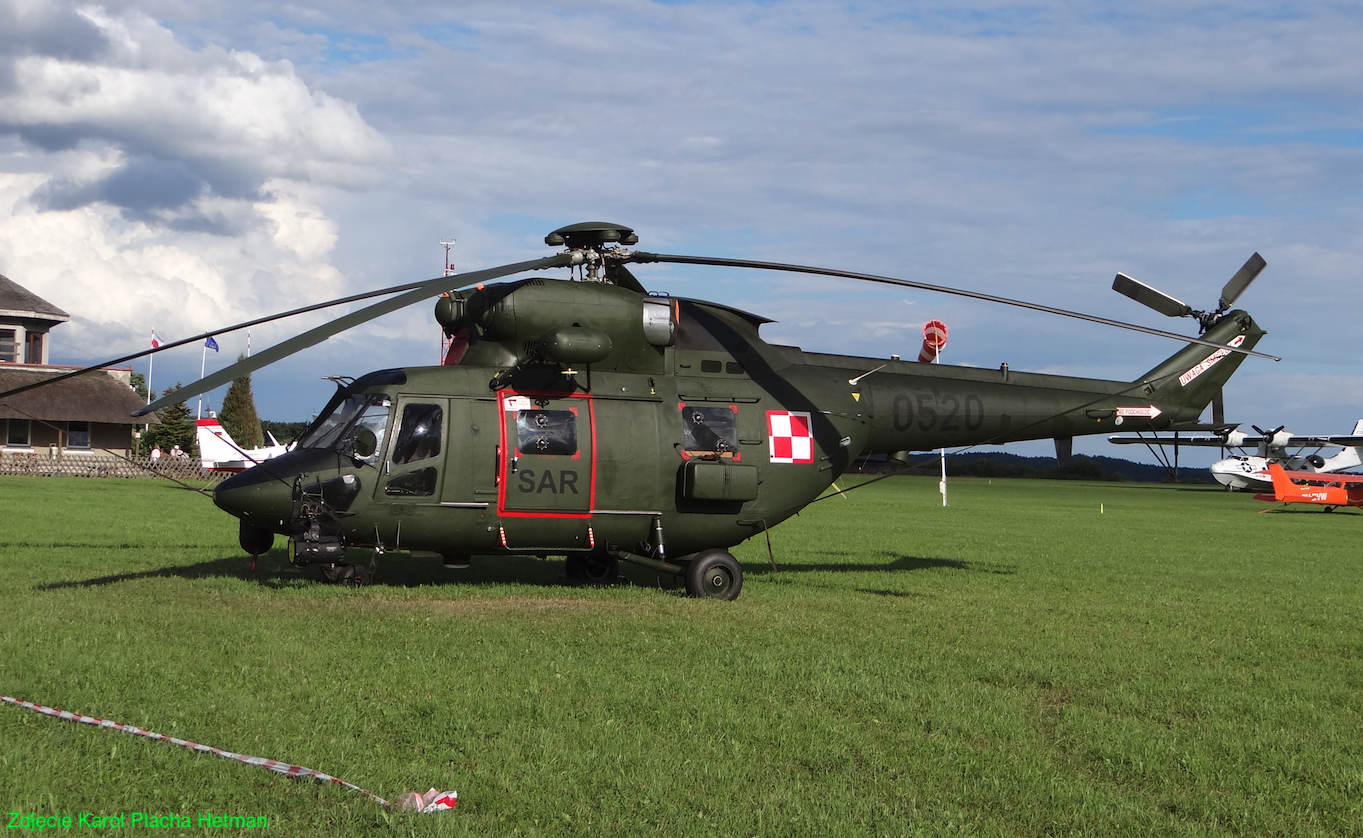Świdnik 2013-07-21
Świdnik airport. WSK PZL Swidnik. 1950 year.
Geographic coordinates: 51.231N 22.691E.
In a new reality. 1944-1950 year.
Shortly after World War II, the School of Pilots and the Airport in Świdnik could not be revived. The main reason was the huge extermination of the Polish population during the occupation, as well as after it. The new communist authorities carefully covered the traces of pre-war Poland. The Zamość-Mokre Airport (1944) was designated as the stationing place of the Polish school of military pilots.
For many years, the people of the Lublin region did not want to come to terms with the new occupation. Communist terror was taking its toll. Many outstanding figures of pre-war life were imprisoned. It turned out impossible to renew the social structures functioning here before the war. Difficult new times have begun. Over time, most of the population began to adapt to the new framework. But at the same time, cultivating Polishness even more in their own hearts and in their own families, still waiting for better times. That is why Masonic forces burn with such hatred towards the community of Eastern Poland until now. (Only two examples from 2012; Withdrawal of subsidies for the construction of flood protection facilities. Withdrawal from the construction of the Warsaw-Lublin-Chełm expressway).
WSK PZL Świdnik. 1950 year.
The new history of Świdnik began with the establishment of the WSK PZL Świdnik plant. (Manufacturer of Communication Equipment, State Aviation Works. 1950) The significance of WSK for the City cannot be overestimated. It was thanks to the plant that people from the Lublin region and other parts of the country began to come to the city. Świdnik must be considered a city planned by the communist system. A good propaganda ploy was to talk about the historical aviation traditions of the region. That’s true. However, one of the goals was to pacify the recalcitrant population by transforming them from Poles into socialist workers. Therefore, from that moment Świdnik did not develop naturally, but was 100% controlled by the Central Committee of the Polish United Workers’ Party. Although under the lofty slogans of economic development ("For Poland to grow stronger and people to live well").
At the end of 1948, the communist authorities in Warsaw decided to establish an aircraft factory in Świdnik. The main initiator was the then Ministry of Industry and Trade. Design works began in the first half of 1949, and the first assumptions were developed in April-June 1949 by the Investment and Reconstruction Department of the Communication Equipment Factory – Warsaw Okęcie, which at that time was the main investor in the reconstruction and expansion of the domestic aviation industry. These assumptions, on June 30, 1949, were sent to the Prozamet Industrial Plant Design Office in Gliwice, where preliminary work on the development of technical documentation was started, in the form of general assumptions and a design for the construction of Plant No. 5 in Świdnik. From May 1950, the group of designers was joined by, among others, Department of Structural Mechanics of the Gdańsk and Poznań University of Technology, Warsaw Office of Industrial Construction Design.
In August 1949, the first construction workers began to arrive in a small summer village near Lublin. In the now historic Ordinance of the Minister of Machinery Industry from 1949, which reads: "2 hectares of potatoes should be dug up and the nearby forest belonging to local farmers should be cleared, as these areas are necessary to build a workers’ housing estate". This was the beginning of the plant and the city. At the end of 1949, in the towns intended for the construction of an industrial plant, forest felling and excavations began. To enable the passage of vehicular transport, the construction of a road towards the road from Lublin to Piaski was initiated. A siding was built on the Lublin-Chełm railway line and a special rolling stock was launched.
From May 1950, there was a construction directorate of the WSK. Engineer Konrad Biały was appointed (in May 1950) as the director of the WSK Plant Construction Directorate. In the spring of 1950, the first builders started work. Housing estates consisting of brick barracks appeared, located next to the railway tracks and in Franciszków.
However, the construction was slow. The situation changed with the outbreak of war in distant Korea (June 25, 1950). At that time, Moscow ordered Poland to arm itself beyond the country’s defense needs. Since the Polish aviation units still operated machines remembering the battles for Berlin, therefore decisions had to be made quickly to launch weapons factories, including turbojet combat aircraft.
In order to speed up the construction of the factory, it was decided to disassemble the hangars at the Krzesiny Airport and transport them to Świdnik and reassemble them here. Presumably there were two hangars. These works lasted from June 1950. The halls were built in 1952, and by 1953 they were equipped with machinery and ready to start production. Auxiliary and service facilities were already in operation. The greatest intensity of construction works took place in the years 1950-1953.
On January 1, 1951, the Central Board of the Communication Equipment Industry in Warsaw, based on the Resolution of the Council of Ministers and the Ordinance of the Minister of Heavy Industry of December 14, 1950, established WSK Plant No. 5 in Świdnik. Full name – Wytwórnia Sprzętu Komunikacyjny Przedsiębiorstwo Państwowe Ododrębowane – Świdnik near Lublin.
From 1951, Świdnik Airport functioned as a company airport. The PZL Świdnik factory and the airport were located exactly on the premises of the pre-war Pilot School and Airport and the surrounding forests. The area is close to a rectangle. From the south, it is limited by the Lublin-Chełm railway line and Żwirki i Wigury Street running along it. From the west, Lotnicza Street. Mełgiewska Street from the north. From the east, the town of Franciszkanów.
The first products of WSK PZL Świdnik.
In 1951, the factory was given the task of launching the production of a metal MIG-15 fighter aircraft, under a Soviet license, with a turbojet engine, under the name Lim-1. After delivering the MIG-15 license documentation, which included: complete construction drawings, detailed technological processes, drawings of instrumentation and tools, technical conditions, standards and other auxiliary processes, translation of these materials and adaptation to local conditions began. At the same time, the same production was launched in WSK Mielec, where translations were also performed and employees of WSK Świdnik were trained.
However, at the end of 1952, the then Central Board of Communication Equipment Industry made fundamental changes in the production structure of WSK Świdnik. It was decided that Świdnik would become a co-operator for the factory in Mielec from the final plant. It must be remembered that Mielec at that time had a much more developed infrastructure. Świdnik fell to production; wings, fins, engine mounts, gun carriages and pilot’s seats. In 1952, the first wings and empennage were produced, which were transferred to WSK PZL Mielec, where the assembly of these aircraft, named Lim-1, took place. Due to mass production, it was decided in 1953 that Świdnik would also produce the rear fuselage parts of these fighters.
Even in 1953, the plant conducted preliminary studies on the possible launch of the production of the TS-8 Bies training aircraft. It was also planned to launch the production of refrigeration compressors. However, these tasks have not been completed.
On October 11, 1952, under the name Aeroclub Fabryczny, the Świdnica aeroclub was officially registered in Warsaw, which used the company’s airport. After 13 years, pilot training began again in Świdnik.
WSK PZL Świdnik. 1954 year.
In 1954, at the highest levels of communist power, decisions were made to select PZL Świdnik as the first and only manufacturer of helicopters in Poland. The helicopter has become the symbol of the city. At the same time, it was planned to start the production of motorcycles.
It must be remembered that the production of helicopters in Poland greatly ennobled our country. After all, the history of a usable helicopter in the world was only 10 years old. Of course, we ourselves were successful in this field, but depending on the will of Moscow, we were at their mercy. The inefficient Soviet economy was unable to undertake the mass production of Mil Mi-1 helicopters. The Russians needed to have reserves for the development of larger structures. That is why Poland was commissioned to serial production of the Mil Mi-1 helicopter. As in the case of the launch of serial production of Lim-1 (MiG-15) fighters, the documentation had to be translated and adapted into Polish and adapted to the capabilities of the Polish economy.
In 1956, the first four Mi-1 helicopters (better known as SM-1) left the plant, assembled from parts imported from CCCP. Their first flight took place in the summer of 1956. Mass production started in 1957. At that time, Poland was one of the few countries in the world where this type of production was mastered. There were only six of these countries.
When the basic problems with the start of production of the SM-1 helicopters were solved, the engineers began work on launching the production of the MO6 motorcycle, with a 125 cm3 engine. In 1955, the WSK Świdnik plant already produced 3,126 pieces of WSK MO6 motorcycles, which were systematically modernized during production. Then more models were created, and the MO6 motorcycle is one of the iconic Polish motorization.
In the following years, the company improved its technology park. As a result, a whole family of airframes from Świdnica appeared: SM-1 in sanitary, school, crane, agricultural versions and the universal SM-2. The SM-2 is a significantly upgraded SM-1 with a much larger cabin. A total of 1,800 SM-1 and SM-2 helicopters were built. It was a huge number. Most of these helicopters went to the East.
On September 28, 1957, the plant was named after the famous Polish aviation constructor, engineer Zygmunt Puławski. From then on, the full name of the plant was: Zygmunt Puławski Communication Equipment Factory "PZL-Świdnik". In 1958, a plinth was placed in front of the main entrance gate, and on it a metal model of a P-7 fighter plane, designed by engineer Zygmunt Puławski. In 2012, the plane was restored and went under the roof to the new air terminal at Świdnik Airport.
In 1963, the situation from 1954 was repeated, when the construction of SM-1 (Mi-1) helicopters was commissioned. This time, Moscow commissioned Poland to produce the Mi-2 helicopter. Importantly, this Soviet helicopter was built exclusively at PZL Świdnik. Even the Soviets used Mi-2 helicopters from Poland. The CCCP industry could not undertake the construction of these machines, because the plants were loaded with the production of combat aircraft. The Soviets will not agree to give the helicopter a Polish designation, which was supposed to be SM-3.
PZL Mi-2 is a 9-seater helicopter with a MTOW weight of 3,550 kg. Powered by two GTD-350 turbine engines with 2 x 400 hp or GTD-350W with 2 x 425 hp. The construction of the first helicopters began in 1964. In 1965, the first Mi-2 machine was flown, and serial production was already underway. 5,450 Mi-2 helicopters were produced. Most machines were exported to CCCP. In Poland, these helicopters were used in the Polish Army and the national economy, in many versions and varieties.
In the 1960s, WSK Świdnik was a multi-plant enterprise, which included: the parent plant in Świdnik with the Aviation Production Plant, the Automotive Production Plant, the Agro-Aviation Services Plant and the Communication Equipment Research and Development Center established in 1969. Field Plant in Tomaszów Lubelski. In addition, WSK Świdnik produced; pumps, couplings, forgings, wheelchairs, car trailers.
The WSK Świdnik company was also a manufacturer, since 1967, of pumps and couplings for Jelcz trucks and Berliet-licensed buses, as well as refrigerators installed on Star and Jelcz car chassis.
By order of the Minister of Machine Industry, it was established on August 17, 1967 at WSK Świdnik – Helicopter Construction Experimental Plant. The activity of the experimental plant was related to the implementation of topics modernizing and developing the construction of manufactured products, launching their new versions. These tasks were carried out together with; Moscow Helicopter Plant, Institute of Aviation, Warsaw University of Technology, Cracow University of Technology, Maria Curie-Skłodowska University, Military University of Technology.
Then, on the basis of the Ordinance of the Minister of Machine Industry of March 18, 1972, the WSK Experimental Plant was transformed into the Research and Development Center of Communication Equipment. The activity profile of the center against the background of the research and development base of the aviation industry has been focused mainly on comprehensive research and development, construction, technological, design and experimental work in the field of helicopters and motorcycles.
With the participation of OBR and the Land Plant in Tomaszów Lubelski and the Land Plant in Lubowidz, the production of automotive products was carried out. The plant in Tomaszów Lubelski produced mainly motorcycle parts and assemblies, while the plant in Lubowidz produced aviation elements from laminates.
In the years 1972-1977, WSK PZL Świdnik launched and produced the high-performance SZD-30 Pirat glider. After the production in Świdnik was completed, it was transferred to SZLS Delta Bielsko Biała, where the construction of this glider came from. Gliders were also built in Świdnik; PW-5, PW-6.
The 1970s were a period of relative opening of the Polish economy to the free world. It became clear that we cannot export Mi-2 helicopters equipped with eastern propulsion to the west. (The reason was too much fuel consumption). That is why a group of Polish engineers decided to adapt western engines. We managed to establish cooperation with Allison. This is how the PZL-Kania helicopter was created, resembling the Mi-2 in appearance, but only as an airframe. The drive is two Allison 250-C20B engines with a power of 2 x 426 HP. MTOW weight 3,550 kg. 10-person capacity. Bendix/King radio and navigation devices. New chassis. Due to poor funding, research and development work on the PZL Kania helicopter lasted for a relatively long time. In 1986, the helicopter received a national type certificate.
Simultaneously with the PZL Kania helicopter, in 1978, a similar helicopter marked PZL Taurus was developed. This helicopter was developed specifically for the North American market. It was equipped with the same engines as PZL Kania. However, it had other installations and equipment. The air intake and engine cooling systems have also been changed. In 1974, the authorities gave permission to start work on the PZL Sokół helicopter. It was a breakthrough moment in the history of the company’s Research and Development Centre. Officially, it was supposed to be an enlarged version of the Mi-2 helicopter, developed together with OKB Mila. In fact, PZL Sokół is an original Polish design by Stanisław Kamiński, an engineer from Świdnica. The prototype made its maiden flight on November 16, 1979. However, the official flight took place only on May 6, 1982.
The main problem in the development of the structure was poor funding. And the design was distinguished by many modern solutions that were appreciated all over the world. It was a two-axis stabilization system, not used before. And a comprehensive anti-icing installation.
PZL Sokół is a structure designed for 14 people. MTOW weight 6,400 kg. Powered by two PZL 10W engines with a power of 2 x 662 kW, the same ones that power the PZL M-28 transport aircraft. It is a multi-purpose helicopter, produced in many versions; passenger, VIP, transport, crane, police, sanitary, medical, mountain rescue, sea rescue, military. PZL-Sokół received certificates according to FAR-29, issued by the aviation supervision authorities of Poland, CCCP, Germany, USA and Spain.
In 1976, WSK Świdnik launched the production of assemblies for the Soviet IL-86 aerobus (later also for IL-96): rudders, elevators and ailerons. The PZL Mielec plant was also involved in the construction of components for the Il-86 aircraft. New technologies for the plant were introduced: gluing of large-size assemblies, machining of complex shapes. The result of this cooperation was the subsequent launch of the production of An-28 fuselage elements in Świdnik, later M-28, the main production of which was located in PZL Mielec.
Until the early 1980s, WSK Świdnik produced a total of over 5,000 Mi-2 helicopters, over 1,600,000 motorcycles, and over 70,000 clutches. In 1985, the 2,000,000th motorcycle rolled off the WSK assembly line. Among them, a whole family of "birds"; Gil, Kobuz, Kos. Powered by 125 and 175cc engines. Despite this, in November 1985, a controversial decision was made by the authorities to end the production of motorcycles. The last bike was a Kos motorcycle with the number 1 012 083.
In July 1988, the PZL Kania helicopter, as the second after PZL Sokół, was awarded the gold medal of the Poznań International Fair.
In 1989, huge social and economic changes took place in Poland. Świdnik, as a leading center of bottom-up democratization of life in Poland, over time suffered one of the greatest consequences of these processes. This was mainly manifested with the highest unemployment in the country. The central authorities had an excellent cover in the form of a slogan – "The collapse of the Soviet market." But they have done little to find new outlets.
In 1991, WSK began the process of transforming the company into a company wholly owned by the State Treasury. It was the beginning of the privatization and, at the same time, the liquidation of the Polish Aviation Industry. The workers of Świdnik did not fight for such changes. The first chairman of the company’s management board was dir. Mieczyslaw Majewski.
In March 1993, the built PW-5 glider won the competition of the International Aviation Federation for a world-class glider. In May 1993, the PZL Sokół helicopter received an American certificate, which was a great success. In turn, in November 1993, PZL W-3 Sokół received the emblem – Teraz Polska.
In the period 1991-1993, there was a series of mass dismissals from WSK Świdnik. At the beginning of 1991, 750 people. In July 1991, another 600 employees. At the beginning of 1993, WSK PZL-Świdnik SA employed 5,077 employees.
In the mid-1990s, it was known that PZL Świdnik was at the mercy of the decision-makers from Warsaw, and if it wanted to survive, it had to rely on itself. The first step was to obtain all possible production certificates. In 1994, a quality assurance system according to ISO9001 was implemented. In 2000, the company obtained a quality system certificate acc. AQAP-110 (NATO standard) and a certificate of production capacity and design in accordance with the JAR-21 standard. These certificates allowed us to establish cooperation with large foreign companies, e.g. with Aerospatiale for the production of the ATR-72 passenger center wing. PZL Świdnik changed from a factory of final products to a subcontractor. We managed to establish cooperation with companies such as; Eurocopter, Agusta, Latecoere, Dassault, Ratier-Figeac, Snecma, Boeing. The plant began to manufacture aviation structures: fuselages and fuselage elements, center wing, door mechanisms, rudders, fireproof linings. The company also offered a wide range of production services: machining, coating treatments (e.g. chromic acid anodizing of aluminum parts and structures), welded structures, bonding of metals and composites, and forgings.
PZL SW-4 Puszczyk.
Already at the beginning of the 1980s, it was known that the Mi-2 helicopter was definitely too heavy in most tasks. In turn, the SM-2 had its years long behind it. In 1981, during the International Helicopter Competition in Piotrków Trybunalski, the CCCP team performed on Mi-1 machines, arousing laughter and pity. While at that time other helicopters in the air even performed a loop, the Mi-1 barely swayed from side to side.
Work on a new light Polish helicopter began at PZL Świdnik in 1986. In 1987, a model was built. The program struggled with funding shortages and its development was constantly being called into question. Despite this, on October 29, 1996, the prototype with registration marks SP-PSW was flown. In 1998, the second prototype flew, with the registration SP-PSZ. In 2002, the helicopter received a Polish certificate based on aviation regulations JAR-27. In 2003, the Polish Army ordered one copy with the intention of purchasing another 30 machines. As a result, the SW-4 helicopter received the EASA certificate allowing it to be sold and used in Europe. The certification procedure of the SW-4 helicopter was carried out on behalf of the Agency by specialists from Great Britain.
The SW-4 helicopter is a light, multi-purpose machine powered by a 457 HP Rolls-Royce 250 C20R/2(SP) turbine engine. MTOW weight 1,800 kg. It takes on board up to 5 people or a pilot and 550 kg of cargo. In the passenger version, it has a trunk for 150 kg of cargo with a capacity of 0.85 m3. Its maximum speed is 260 km/h, and the range – using the basic fuel tank is almost 800 km. The SW-4 consumes about 100 liters of fuel per hour of flight. The price of the helicopter (2005) on the civilian market is about US$750,000.
Further history of WSK PZL Świdnik.
By 2005, over 7,200 helicopters were built in Świdnik. And although the pace of production has slowed down in recent years, it should be assumed that helicopters and other aviation production will continue to be produced here.
From January 29, 2010, Agusta Westland became the majority shareholder of PZL-Świdnik SA. The production of AW 149 helicopters was launched in Świdnik.
Written by Karol Placha Hetman

